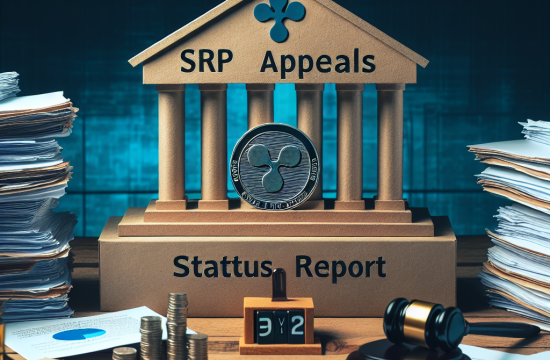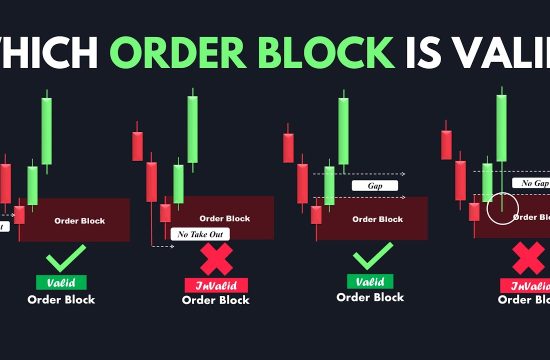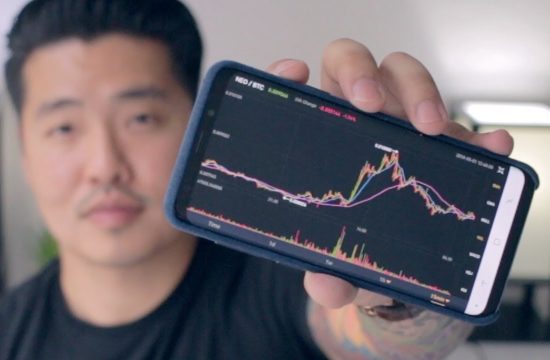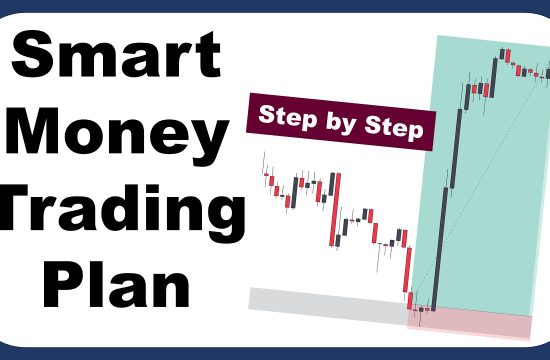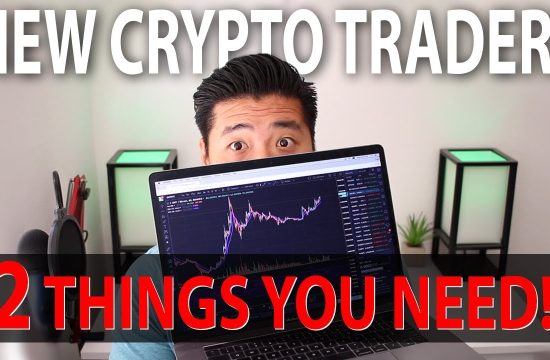Understanding Swing Trading Basics
What Is Swing Trading?
So, let me break it down for you. Swing trading is a trading style that aims to capture short- to medium-term gains in a stock (or a cryptocurrency, in this case) over a period of a few days to several weeks. It’s not all about day trading or holding onto assets indefinitely. As someone who’s dabbled in Bitcoin for a while now, I can tell you that swing trading gives you the flexibility to ride those price waves without feeling tethered to your screen all day.
The goal here is to use price swings to your advantage. You buy when you think the price is about to rise and sell when you believe it’s about to drop. It’s kind of like catching a wave at the beach, you want to time it just right! While it’s not a guaranteed method, with the right strategies, it can definitely be rewarding.
One of the best parts about swing trading is that you don’t need to spend all day analyzing charts—just enough to understand the trends and patterns. And hey, the volatility of Bitcoin? That’s your friend if you’re swinging! It creates the opportunities you need to make some cash.
Why Choose Bitcoin for Swing Trading?
Now, onto Bitcoin—why should you consider it for your swing trading journey? Well, Bitcoin is like the rockstar of cryptocurrencies; it gets all the attention! With its high volatility, there are plenty of price swings to take advantage of. Personally, I’ve found that Bitcoin can provide some thrilling opportunities for those willing to dive in.
Another reason is liquidity. Bitcoin has a vast market, and there are many buyers and sellers at any given time. This means you can get in and out of trades more easily compared to smaller, lesser-known coins. You don’t want to be stuck holding onto a position you can’t sell, right?
Lastly, Bitcoin trading is backed by a community and ecosystem that’s constantly growing and evolving. There are tons of resources, forums, and platforms where you can learn and connect with other traders, making it easier to stay informed and improve your own skills.
Setting Up Your Trading Strategy
A solid trading strategy is crucial. You can’t just jump in willy-nilly! Here’s what I’ve learned through trial and error: First things first, you need to define your goals. Are you looking for short-term gains, or are you willing to hold for a while? Get clear about what you’re aiming for so you can tailor your strategy.
Next up, risk management is a must. Set your stop-loss orders to protect your capital. Trust me, nothing messes with your morale like a devastating loss because you weren’t paying attention. Define how much you’re willing to risk in each trade, and stick to it. It’s all about keeping your emotions in check.
Finally, use technical analysis to identify potential entry and exit points. This might sound fancy, but it’s simply studying the price charts and patterns. There are numerous tools at your disposal, from trend lines to indicators like RSI. Pick what works for you and practice, practice, practice!
Identifying Trend Patterns
Recognizing Bullish and Bearish Trends
In the world of swing trading, identifying whether the market is bullish (uptrend) or bearish (downtrend) can be a game changer. I remember when I first started trading, I was so focused on making profits that I often overlooked the bigger trend pictures. Don’t make the same mistake! Look for higher highs and lower lows as signs of bullish and bearish trends, respectively.
When Bitcoin is moving upward, it might be the perfect time to enter a trade. But if you notice those pesky lower lows, it could be a sign to back off for a bit. Staying in tune with the market direction not only helps you decide when to enter but also when to exit.
Also, consider monitoring the volume. Increased volume can confirm trends, adding a layer of reassurance. When you’re seeing price movements along with higher volume, it’s a bit of a “green light” that suggests the trend could continue. Pattern recognition becomes second nature with a little practice, I promise!
Using Support and Resistance Levels
Support and resistance levels are your bread and butter in swing trading. These are key price levels where the asset tends to stop and reverse. Personally, I’ve found that drawing these lines on my charts has helped clarify my trading strategy immensely. It’s like creating a map for your trades!
Support is where Bitcoin tends to bounce back up after a dip, while resistance is the ceiling where prices start to fall again. Understanding these levels helps you make educated guesses about when to enter or exit a trade. I mean, who wouldn’t want to hit those sweet spots consistently?
What I usually do is keep an eye on historical price movements. The more often a level has acted as support or resistance, the more likely it is to do so again. Don’t ignore the psychological aspect of trading; many traders watch the same levels, which can create self-fulfilling prophecies. The market can be rally wild!
Utilizing Chart Patterns
Chart patterns are visual representations of market behavior, and boy, can they tell you a lot! From flags to triangles to head and shoulders, these patterns indicate potential price movements. I often refer to resources that explain these patterns thoroughly because I want to understand what they’re telling me.
For instance, a bullish flag often suggests a continuation of an uptrend, meaning it could be a great time to hop back into a trade. Conversely, a head and shoulders pattern indicates a potential reversal, signaling it might be time to reevaluate your position. Make sure to familiarize yourself with the basic patterns so you can recognize them when they pop up!
Remember that these aren’t foolproof; they’re just signals. I like to combine what I see in chart patterns with other indicators for a more holistic view of the market. With practice, interpreting these patterns will become second nature.
Risk Management and Discipline
The Importance of Stop-Loss Orders
When it comes to swing trading, having a robust risk management strategy is non-negotiable. One of my golden rules is always to set stop-loss orders. These are automatic orders to sell your Bitcoin when it hits a certain price, which helps protect your investment from significant losses. I can’t stress this enough: don’t just wing it!
By having a stop-loss in place, you’re taking emotions out of trading and allowing the strategy to do its job. Once I began utilizing stop-loss orders, I noticed I was more relaxed because I knew I had a safety net. It gives you the freedom to focus on your analysis and not stress over every little price fluctuation.
But remember to set your stop-loss order at a logical level, not just anywhere. I like to place it a little below support levels, giving some breathing room for market noise. This way, you’re not prematurely stopped out by a minor dip—trust me, there will be many of those!
Maintaining Discipline in Trades
Discipline is your best friend in trading. You can have the best strategy and trends all lined up, but if you can’t stick to it, you might as well be throwing darts blindfolded. I’ve learned that creating a routine around my trading can really help cultivate that discipline. Whether it’s daily chart reviews or journaling my trades, it keeps me accountable.
Another key is always to follow your trading plan. I like to write down my rules beforehand, so when the market gets wild, I have something to lean back on. Sitting down after a few wild trades and revisiting my plan often grounds me and helps keep my emotions in check.
Lastly, don’t chase losses. This is a slippery slope that can lead to significant problems. If you’ve taken a loss, accept it, move on, and stick to your plan. Trading can be emotionally draining at times, but that’s when having disciplined strategies really pays off!
Emotional Control in Trading
Let’s face it; emotions can run high in trading. Fear and greed can take over faster than you can say “to the moon!” I’ve been there, and it’s not pretty. That’s why managing your emotions is essential. I remind myself to detach from my trades and view them as business decisions rather than personal victories or defeats.
Have a clear plan in place for how you’ll react to wins and losses. Celebrate your successes, but don’t get cocky. At the same time, if things go south, don’t let it derail your entire trading approach. Remember, trading is a long game, not a sprint.
A good practice is to take breaks when things get overwhelming. Sometimes stepping away for a bit helps clear my mind and lets me reflect calmly on my strategy. In trading, clarity can make all the difference, so find what keeps you balanced.
Building a Trading Community
Engaging with Other Traders
Building a network of fellow traders can boost your trading experience tremendously. I love chatting with like-minded people who understand the ups and downs of this wild cryptocurrency world. Whether it’s online forums or local meetups, connecting with others can keep you motivated and on track.
When you’re surrounded by others who share your passion, you gain insights that help you learn and grow. Different perspectives can highlight strategies you hadn’t considered before, and sometimes, just discussing a single trade can clarify your thoughts. I often learn something new from my peers!
Don’t be afraid to share your knowledge, too. Teaching others can reinforce your learning and make you more confident in your strategies. I’ve found that the give-and-take of a trading community enhances the entire experience.
Utilizing Online Resources
The internet is loaded with resources for aspiring traders. From YouTube tutorials to dedicated trading websites, there’s no shortage of information available. I often find webinars insightful, especially ones led by experienced traders. It gives me new tactics, and I get to see how the pros analyze the market.
Podcasts have also been a great resource for me. Listening while I’m on the go lets me absorb knowledge and tips without feeling overwhelmed. There are podcasts focusing specifically on Bitcoin and swing trading, which have helped deepen my understanding of different strategies.
Remember, though, always cross-reference the information you gather. The last thing you want is to act on a dubious tip you stumbled upon online. Stick to reputable sources and keep your learning multifaceted!
Continuing Education and Improvement
Trading is not a one-and-done process; it’s a journey. To remain successful, you need to commit to continuous education. I’ve taken various online courses, read countless books, and even enrolled in mentorship programs. It’s all helped refine my skills and broaden my understanding.
Moreover, keep up with market news. The crypto landscape changes so fast; what worked yesterday might not apply today. I subscribe to newsletters and follow key figures in the cryptocurrency space to stay informed. It feels good when you can connect the dots from the news to your trading strategy.
Lastly, don’t forget to reflect on your past trades. What went right? What tanked? I keep a trading journal and jot down what I learn from each trade, whether it’s a win or a loss. Self-reflection is crucial to growth, and after all, in this game, we’re all just trying to become better traders!
FAQ
What is swing trading in Bitcoin?
Swing trading in Bitcoin is a strategy that aims to capture short- to medium-term gains by leveraging price swings over several days or weeks. Traders buy Bitcoin when they believe prices will rise and sell when they anticipate a decline.
How can I identify trends in Bitcoin prices?
You can identify trends by analyzing price charts for patterns, such as higher highs (bullish trend) or lower lows (bearish trend). Additionally, monitoring trading volume can confirm the strength of a trend.
What role does risk management play in swing trading?
Risk management is crucial to protect your capital and maintain emotional control while trading. Implementing stop-loss orders and adhering to a set risk percentage for each trade can help minimize losses.
Why is emotional control important in trading?
Emotional control helps prevent impulsive decisions driven by fear or greed. By maintaining discipline, you can stick to your strategy and make more rational trading choices, leading to better results over time.
How can I engage with other traders?
You can engage with other traders through online forums, social media groups, or local meetups. Additionally, exploring trading communities can provide support, knowledge sharing, and valuable networking opportunities.
Related Content
- Jailbreak Fire Stick with Terrarium TV
- Ethereum to Launch Dencun Upgrade March 13, Introducing ‘Blobs’ for Layer Two Scaling
- Elon Musk: Dogecoin to $1! 🚀
- Alert! Crypto Holders are Being FOOLED [Key Crypto Research]
- Bitcoin, Ethereum Technical Analysis: Bitcoin Consolidates Below $31,000, as Traders Digest Recent Economic Data





